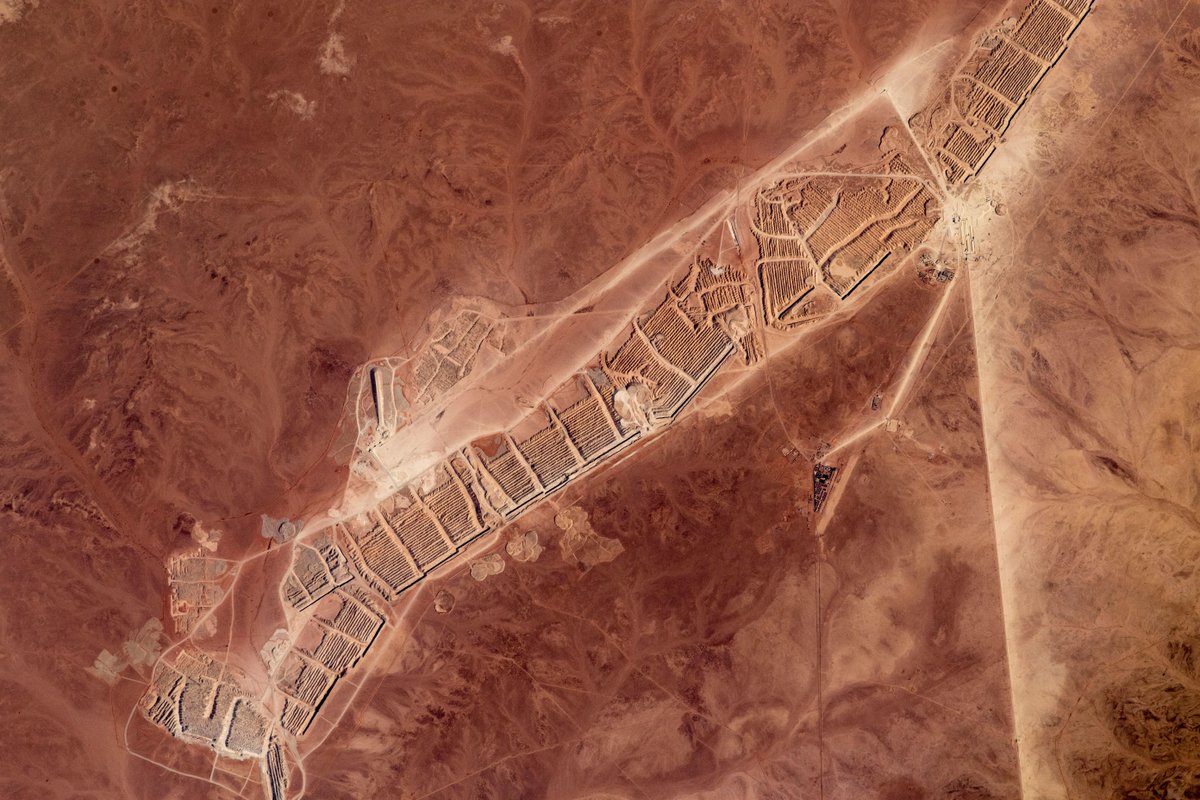[:ja]アレックス・ゲルスト宇宙飛行士がISSから撮影した西サハラのリン鉱床です。

西サハラは、アフリカ大陸北西部の大西洋岸にある地域で、北から時計回りにモロッコ、アルジェリア、モーリタニアに接しています。1976年まではスペイン領サハラでしたが、モーリタニアとモロッコ が分割統治を開始しました。その一方で、西サハラの独立を目指すポリサリオ戦線がアルジェリアの支援を得て武力闘争を開始し、1991年まで続く西サハラ戦争で停戦に至るまで、複雑な武力闘争の歴史があります。画像に示されたブーカラーは、1963年に豊富なリン鉱床が発見された都市で、現在も採掘中です。また、採掘されたリン鉱石はベルトコンベアーでアイウン(ラーユーン)の近くの都市まで運ばれ、船に積み込まれます。
地上の様子はこちらです。

参考文献: Alex Gerst’s Tweet, Bou Craa Phosphate Mine, Western Sahara (NASA Earth Observatory)
地球俯瞰画像を見る: LiVEARTH
[Earthview Wonders] No.646: Bou Craa Phosphate Mine, Western Sahara🇪🇭
Astronaut Alex Gerst captured from ISS Bou Craa Phosphate Mine, Western Sahara.

Western Sahara is a disputed territory in the Maghreb region of North Africa, partially controlled by the self-proclaimed Sahrawi Arab Democratic Republic and partially Moroccan-occupied. It is one of the most sparsely populated territories in the world, mainly consisting of desert flatlands. Occupied by Spain until the late 20th century, Western Sahara has been on the United Nations list of non-self-governing territories since 1963 after a Moroccan demand. Phosphate is a prime component of agricultural fertilizer, and in 1963 In 1963 rich phosphate deposit was discovered in Bou Craa which is now one of the largest phosphate mines in the world. The site produces around 2.4 million tons annually, 14% of the world’s production (2011).
The local scenery on the ground is as follows.

Reference: Alex Gerst’s Tweet, Bou Craa Phosphate Mine, Western Sahara (NASA Earth Observatory)
See earthview photo gallery: LiVEARTH[:en][Earthview Wonders] No.646: Bou Craa Phosphate Mine, Western Sahara🇪🇭
Astronaut Alex Gerst captured from ISS Bou Craa Phosphate Mine, Western Sahara.

Western Sahara is a disputed territory in the Maghreb region of North Africa, partially controlled by the self-proclaimed Sahrawi Arab Democratic Republic and partially Moroccan-occupied. It is one of the most sparsely populated territories in the world, mainly consisting of desert flatlands. Occupied by Spain until the late 20th century, Western Sahara has been on the United Nations list of non-self-governing territories since 1963 after a Moroccan demand. Phosphate is a prime component of agricultural fertilizer, and in 1963 In 1963 rich phosphate deposit was discovered in Bou Craa which is now one of the largest phosphate mines in the world. The site produces around 2.4 million tons annually, 14% of the world’s production (2011).
The local scenery on the ground is as follows.

Reference: Alex Gerst’s Tweet, Bou Craa Phosphate Mine, Western Sahara (NASA Earth Observatory)
See earthview photo gallery: LiVEARTH[:]